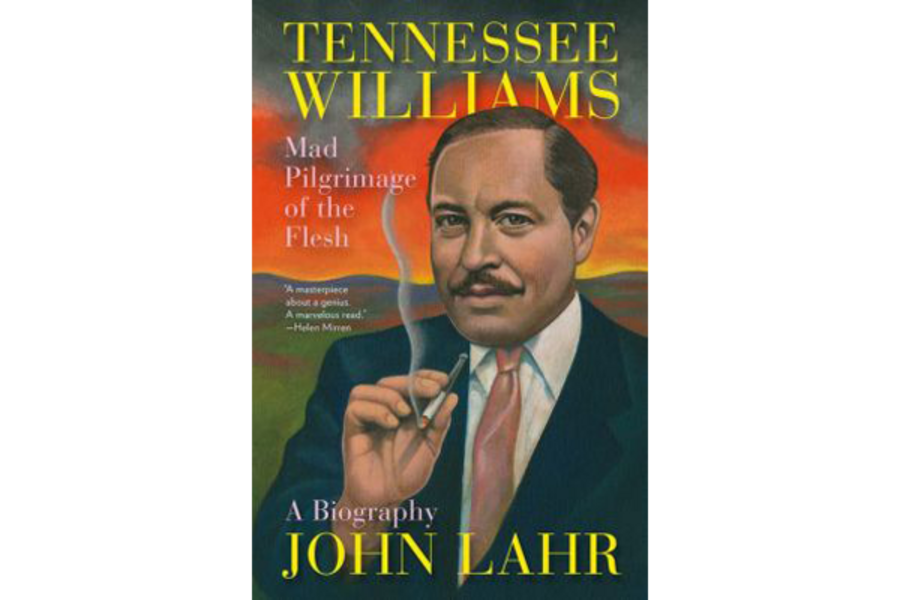'Tennessee Willams: Mad Pilgrimage of the Flesh' paints a troubling yet compassionate portrait
Loading...
The plays of Tennessee Williams transformed American theater: he explored taboo subjects unflinchingly and portrayed the damaged and the outcast with compassion, doing both with a lyricism never before heard on our stage. His iconic characters and scenes – Big Daddy Pollitt denouncing “mendacity"; Stanley Kowalski shouting "Stella!"; Tom Wingfield whispering to the night, "Blow out your candles, Laura" – are burned into our cultural memory.
The source of that art was a damaged, tormented life packed with just as much drama as "Streetcar" or "Cat on a Hot Tin Roof." John Lahr, senior New Yorker drama critic and the author of 18 previous books, has given Williams’s admirers a true gift in Tennessee Williams: Mad Pilgrimage of the Flesh: a biography worthy of its subject.
Lahr’s book benefits from his own diligent research but also from the death of Maria St. Just, the self-appointed guardian of Tennessee Williams’s image who managed to scuttle several potential Williams biographies with her vindictive litigiousness. Much here (particularly about Williams’s formative years and family background) will be new to most readers.
The man whose plays scandalized American conservatives in the 1950s spent much of his childhood in Episcopal rectories in the South, where his maternal grandfather was a priest. His father was a salesman and spent much of his time on the road. The move to St. Louis triggered by his father’s rise to management and thus a permanent residence, was a traumatic change in the life of Williams and his beloved sister Rose. They were transferred from the genteel life of a rectory with kindly grandparents to what Lahr calls the ‘bruising anonymity” of urban life, with an abusive alcoholic father. Combine that with a mother who hated sex so much that her screams drove her children out of the house and a sister whose mental illness was increasingly evident as she grew older and you have a recipe for an artistic life devoted to exploring (in the words of stage director Harold Churm) “the unprotected ... the injured ... the defenseless and the abandoned”. Williams was a man with an endless need for love to salve unhealed childhood wounds, a need that led to profound sustaining friendships such as with those with Carson McCullers and Elia Kazan.
One of the finest parts of this book is Lahr’s account of Williams’s collaboration with Kazan, one of the great artistic partnerships of the 20th century. Lahr somehow makes accounts of script rewrites and staging decisions compulsively readable, in the process showing Kazan’s contribution to Williams’s work, particularly "Cat on a Hot Tin Roof," to be so important that while not nearly as extensive it inevitably brings to mind Gordon Lish’s impact as an editor of Raymond Carver.
Furthermore this is a book so rife with moments of comedy and outrageousness that it simply begs to be read out loud. Who could resist sharing with friends Williams's answer to his mother’s question, “Why are you coughing?”: “Mother, when you destroy a person’s life you must expect certain debilities.” Or Williams’s horrifyingly droll description of being raped in Mexico: “I screamed like a banshee and couldn’t sit down for a week.” And Bette Davis is depicted as so vicious to everyone during the stage production of "Night of the Iguana" that you’ll be left wondering whether she had to act at all for her role in "Whatever Happened to Baby Jane?"
Lahr is equally unsparing when writing about the viciousness of Williams himself. The great playwright was also known for his backbiting cruelty and a selfishness born of an insecurity so profound that he could not bear to be considered anything other than a genius and always had to be right. Williams infamously turned on almost every true friend and love he ever had no matter how much pain he caused.
Nevertheless, Lahr makes some narrative missteps. His account of the Williams-Kazan collaboration would have been even more fascinating had he told us of Kazan’s constant feeling of betrayal. Williams never once defended Kazan to the critics who attributed all the failings of their joint productions to him, never dreaming Williams could be at fault. Lahr doesn’t tell us about this tension in their relationship until roughly 100 pages after he ends the story of the Williams-Kazan partnership. And Lahr begins a chapter with the announcement of Diana Barrymore’s death – an announcement that has no dramatic impact because he hasn’t yet told of us her professional and personal relationship with Williams.
But these are pardonable failings in an otherwise great book. "Mad Pilgrimage of the Flesh" is a full, compassionate portrait of a very flawed man and a brilliant one. Lahr does for Williams what Churm said Williams did for his “injured” characters: “he redeems them with his compassion.”








